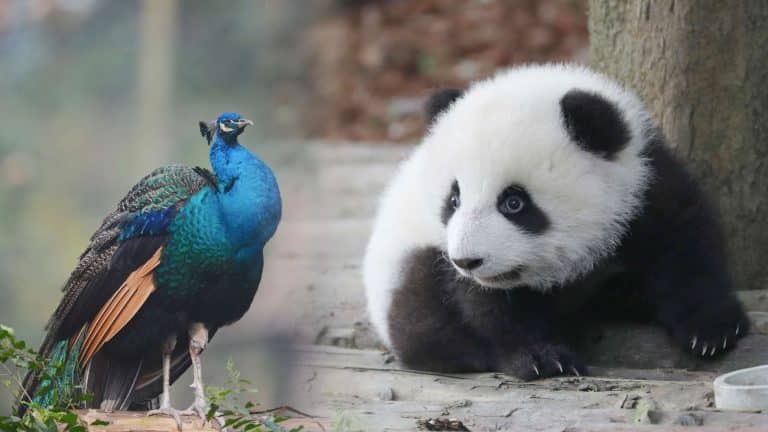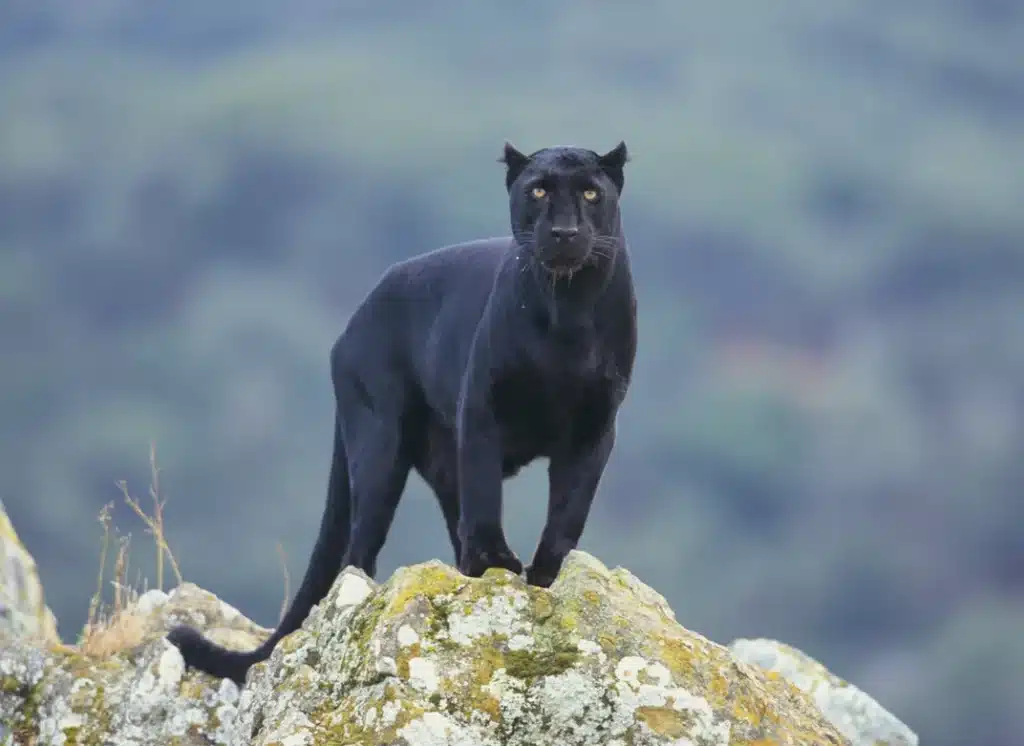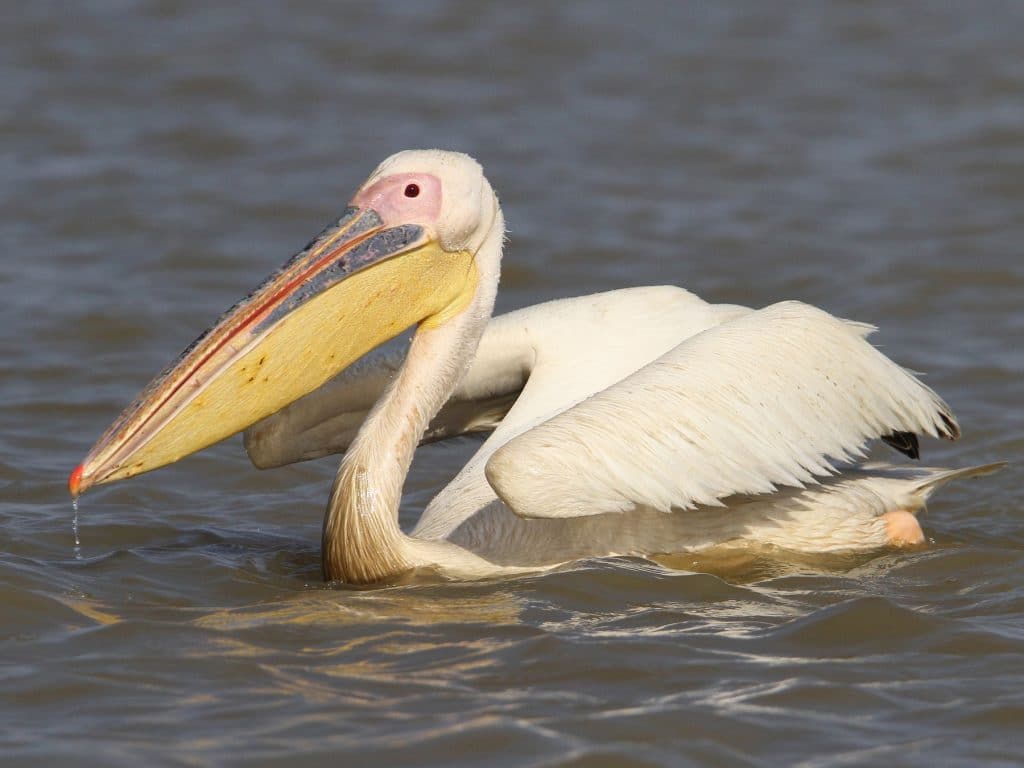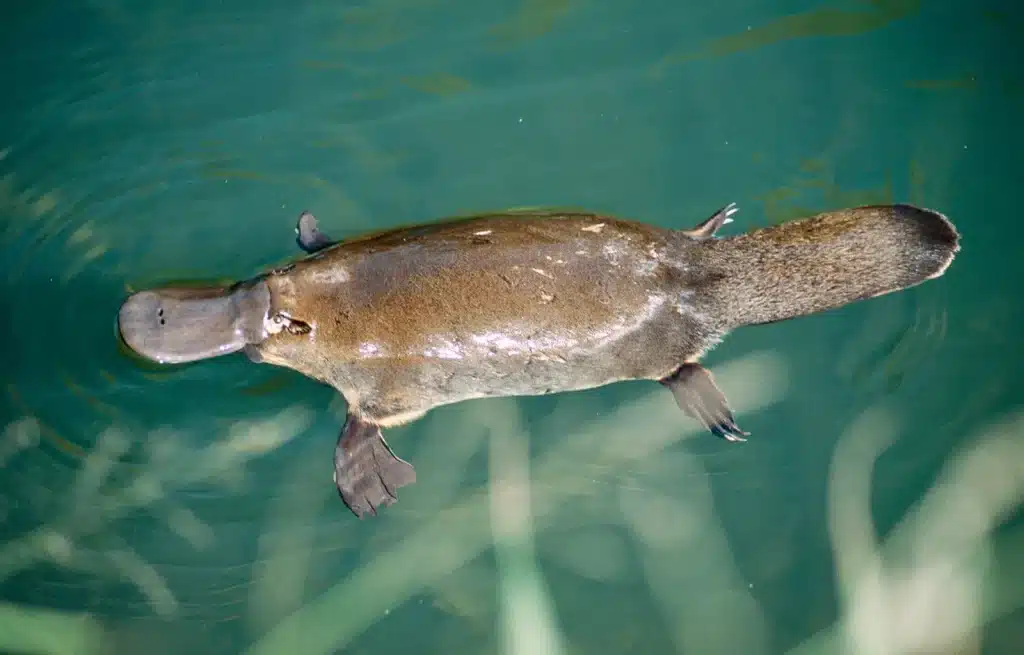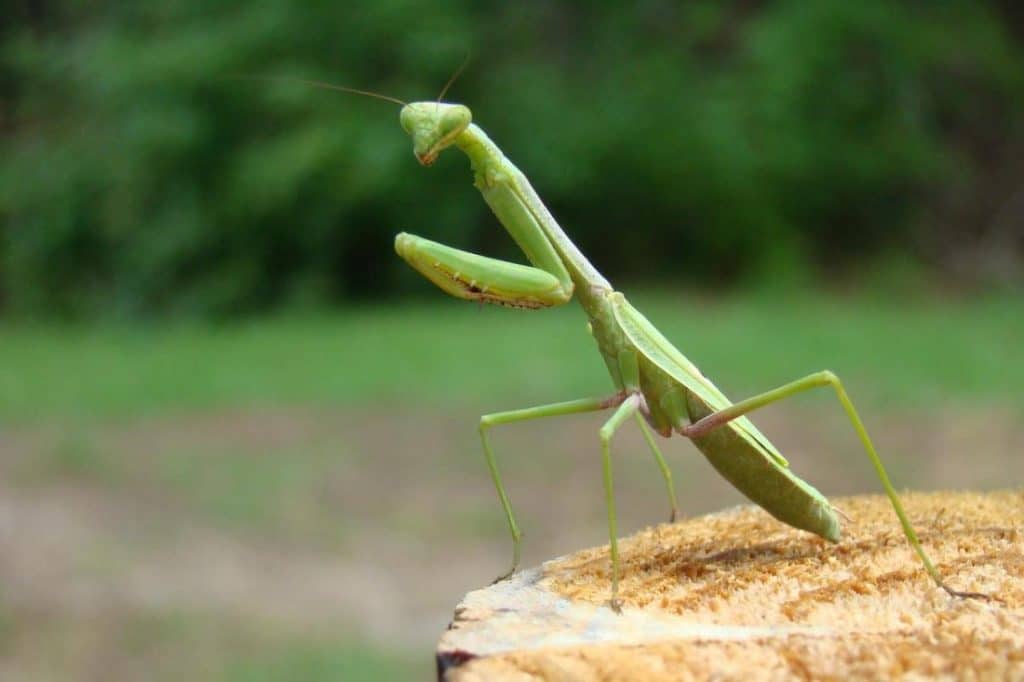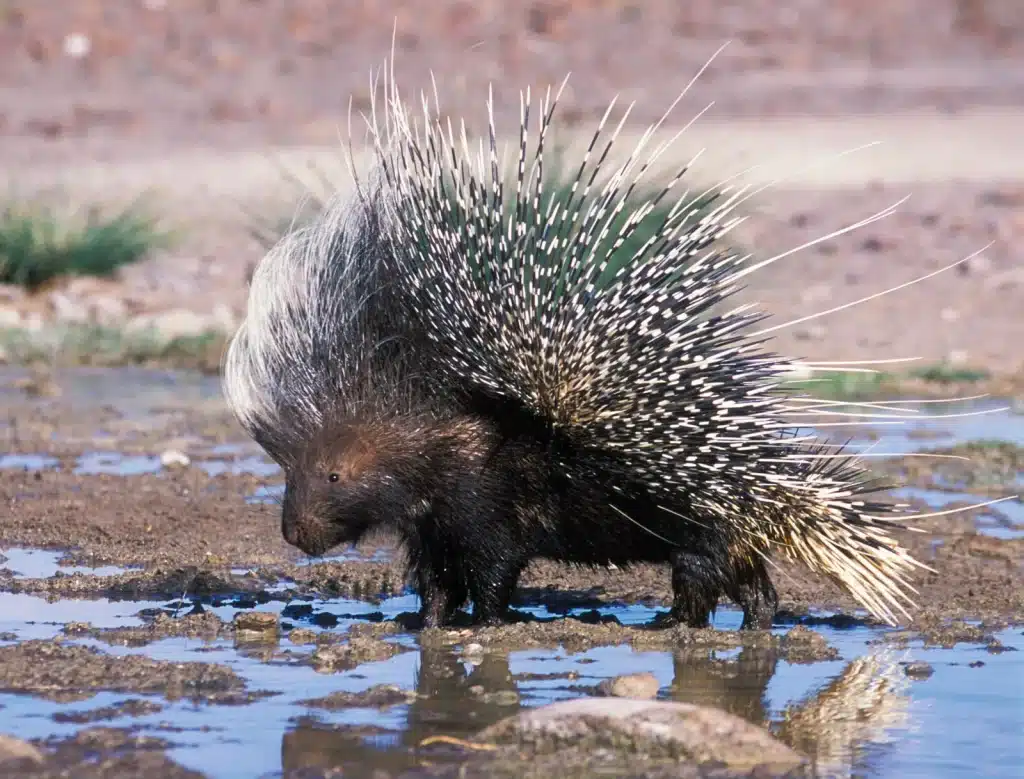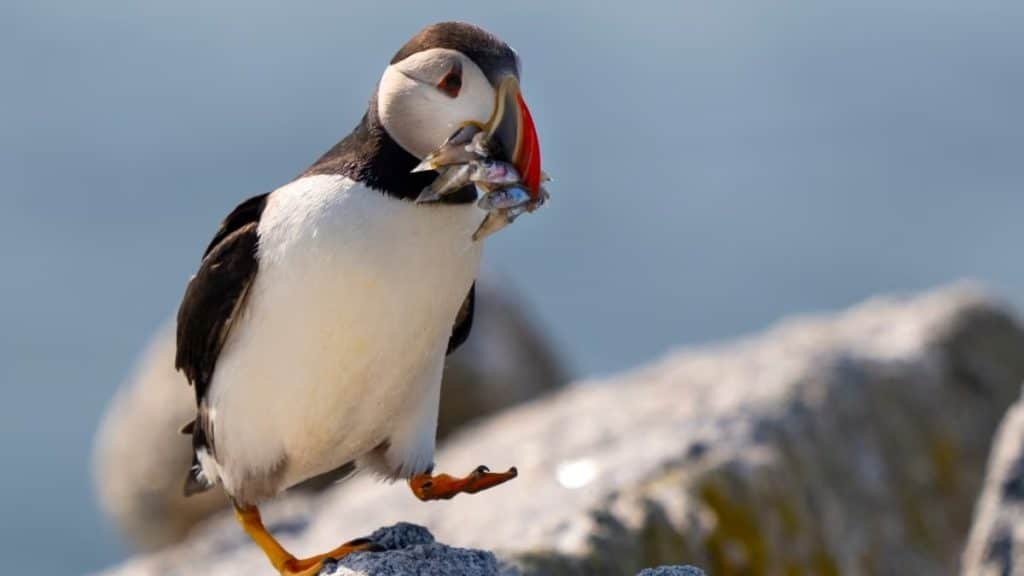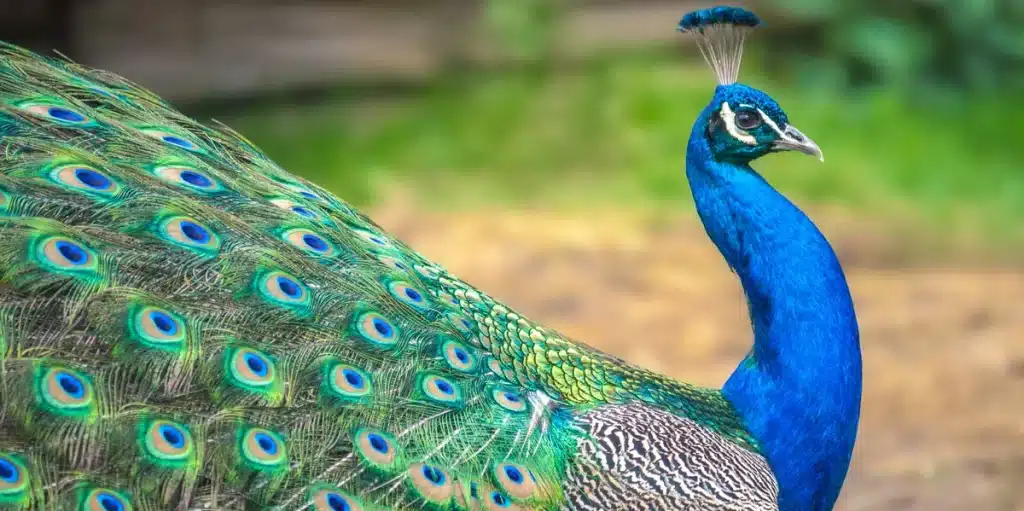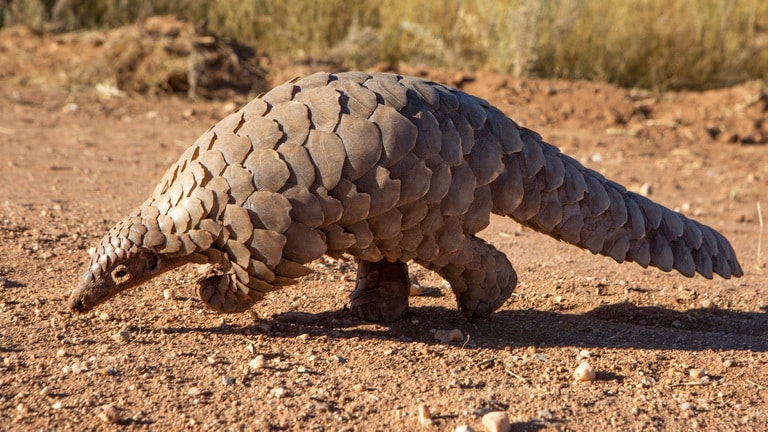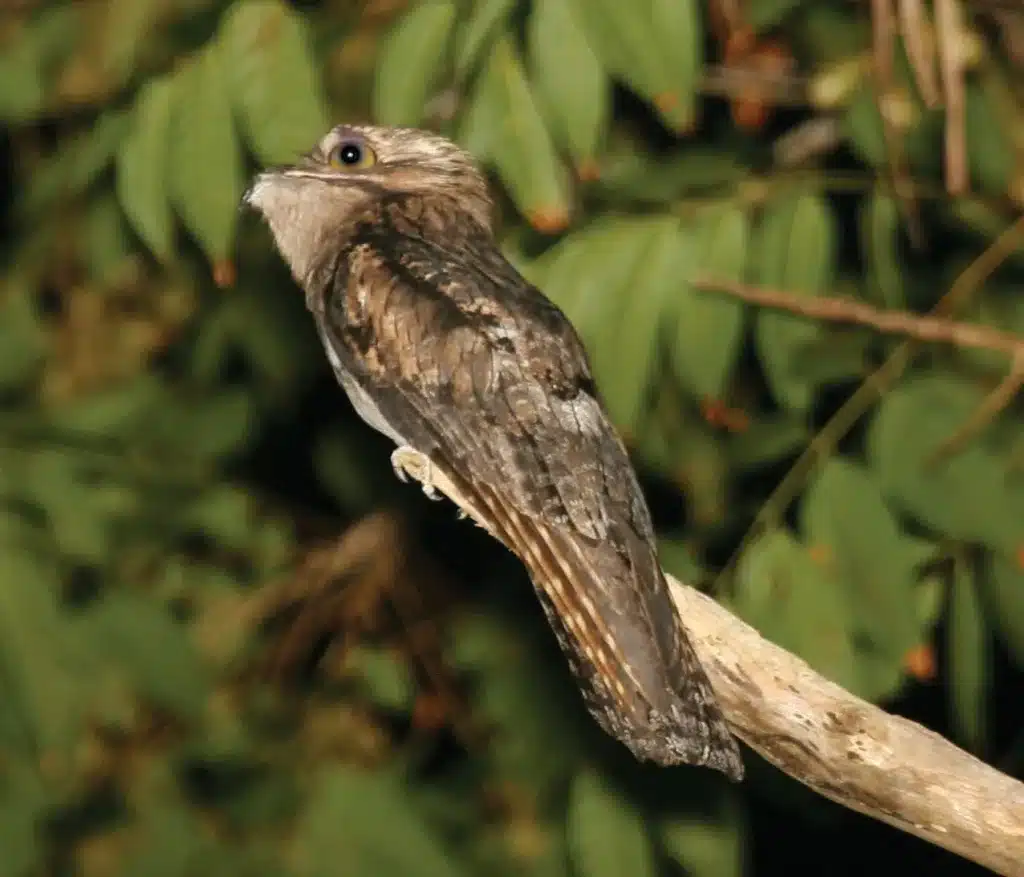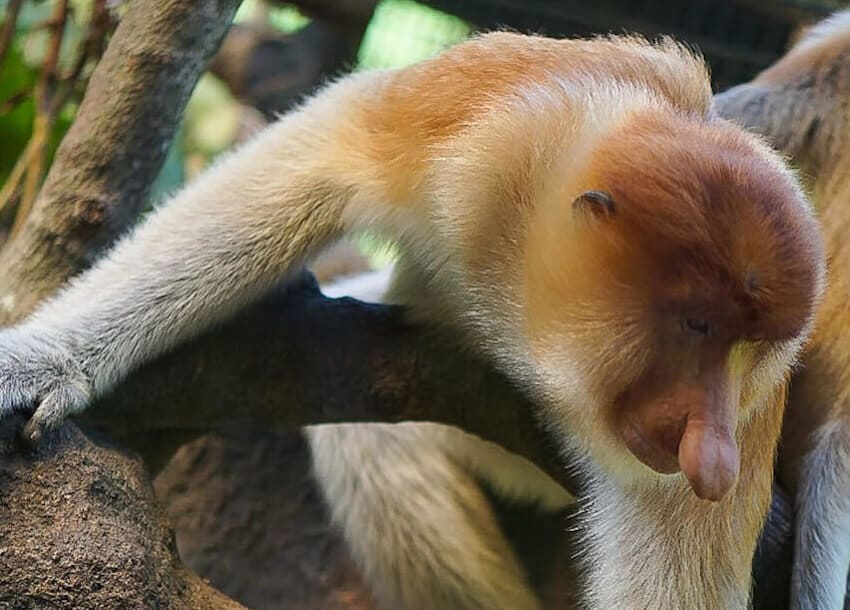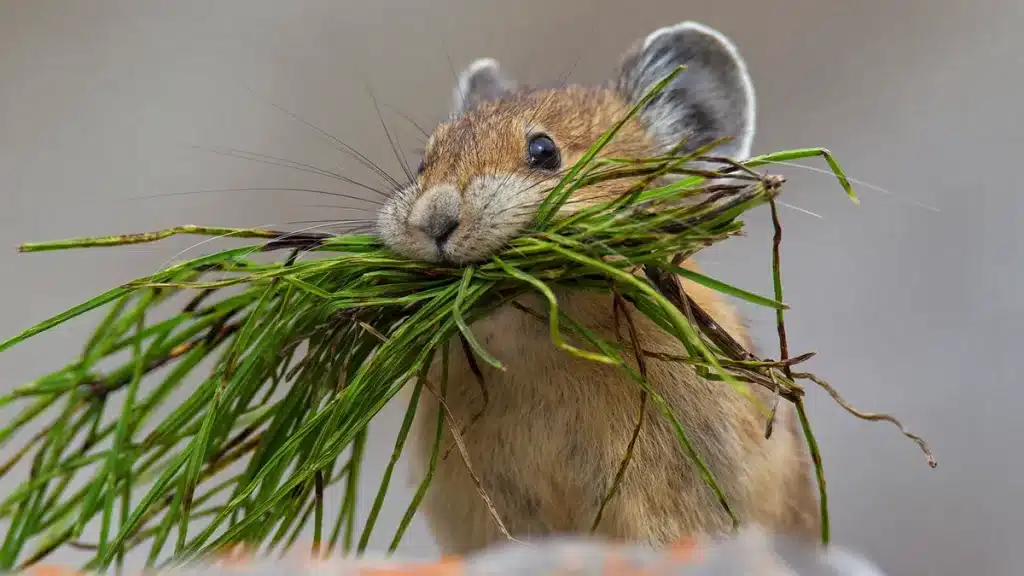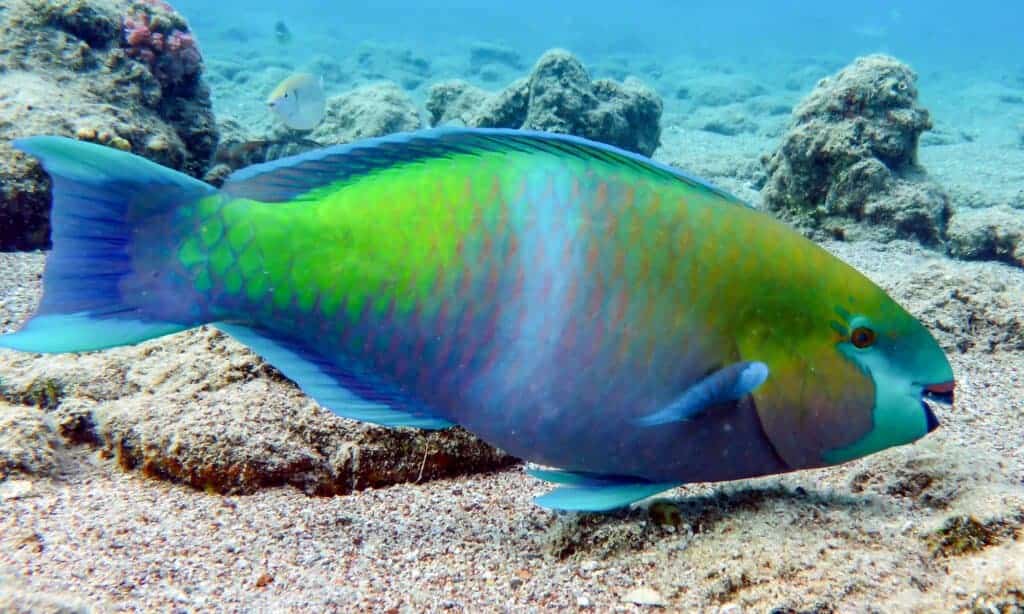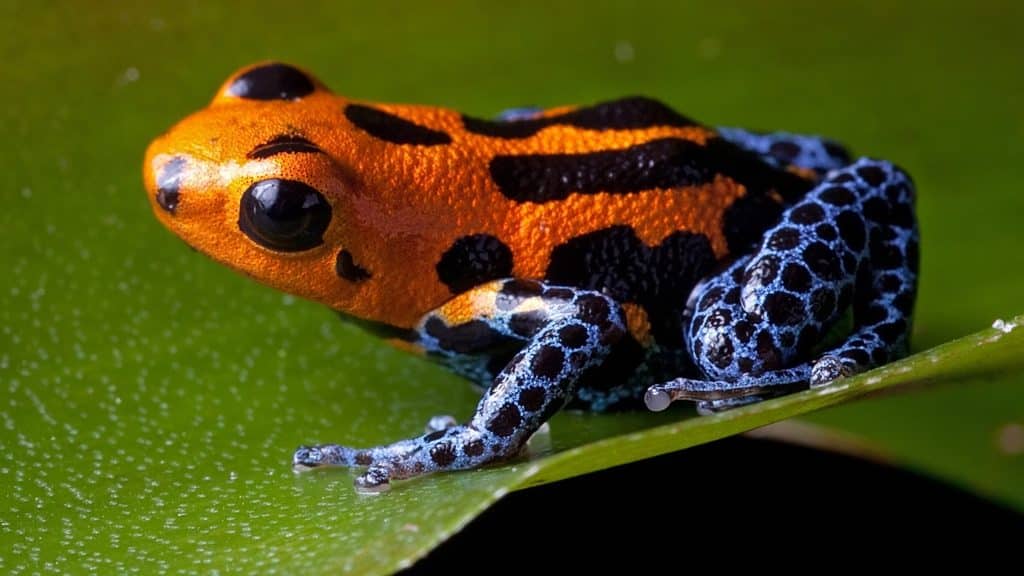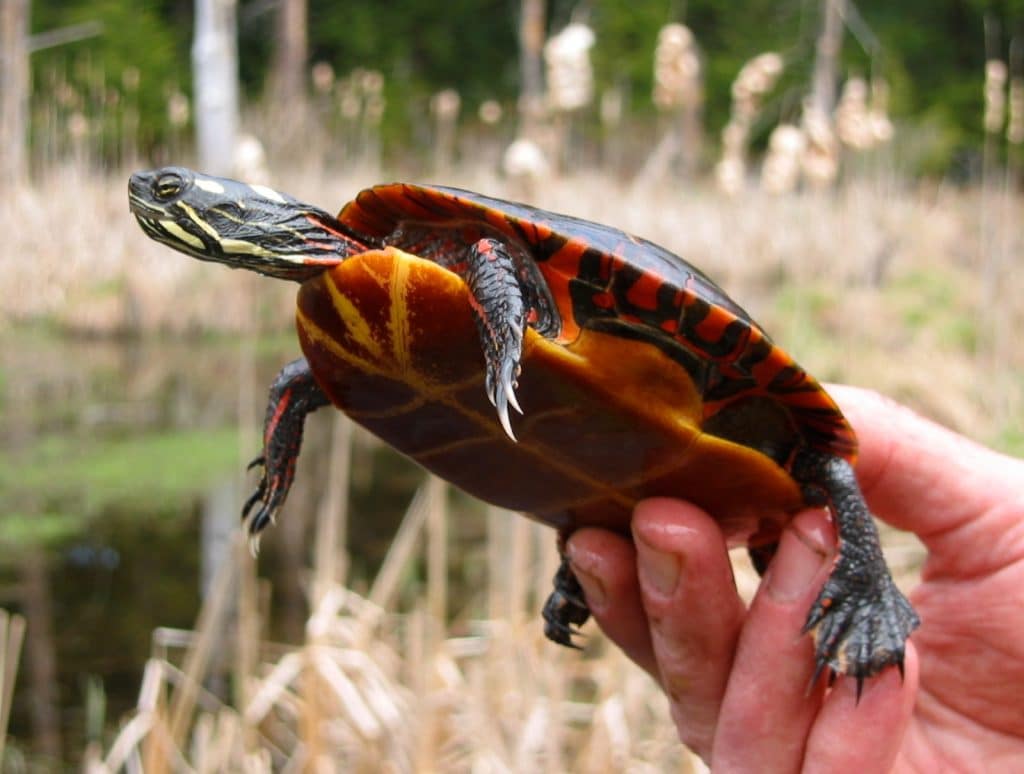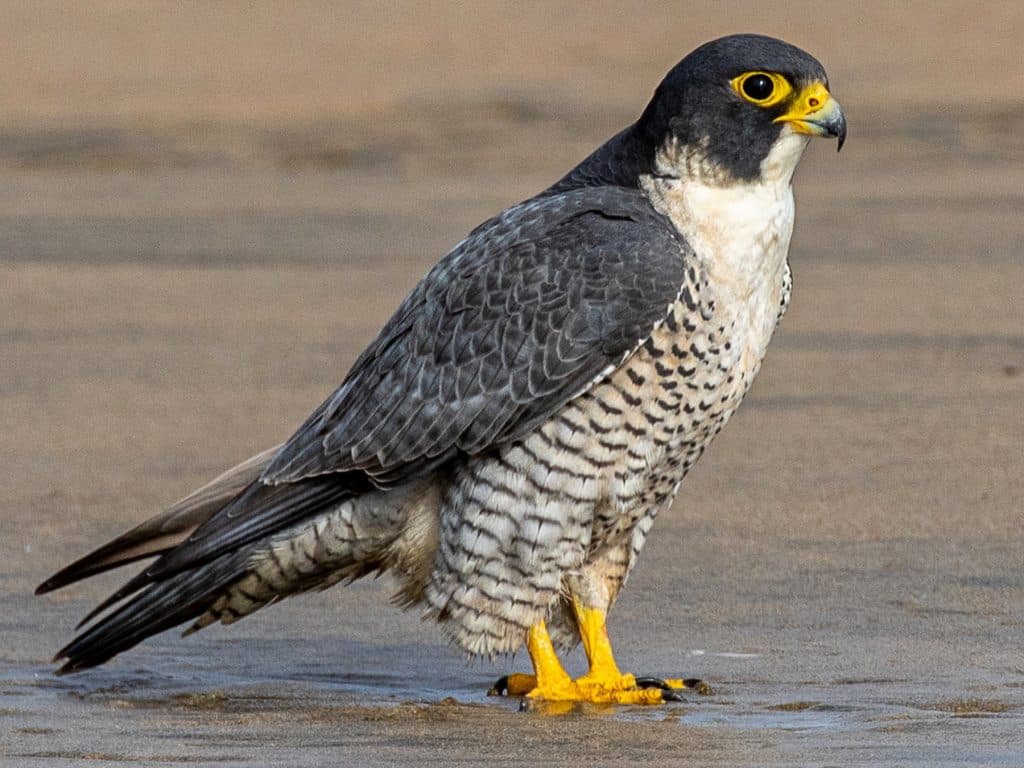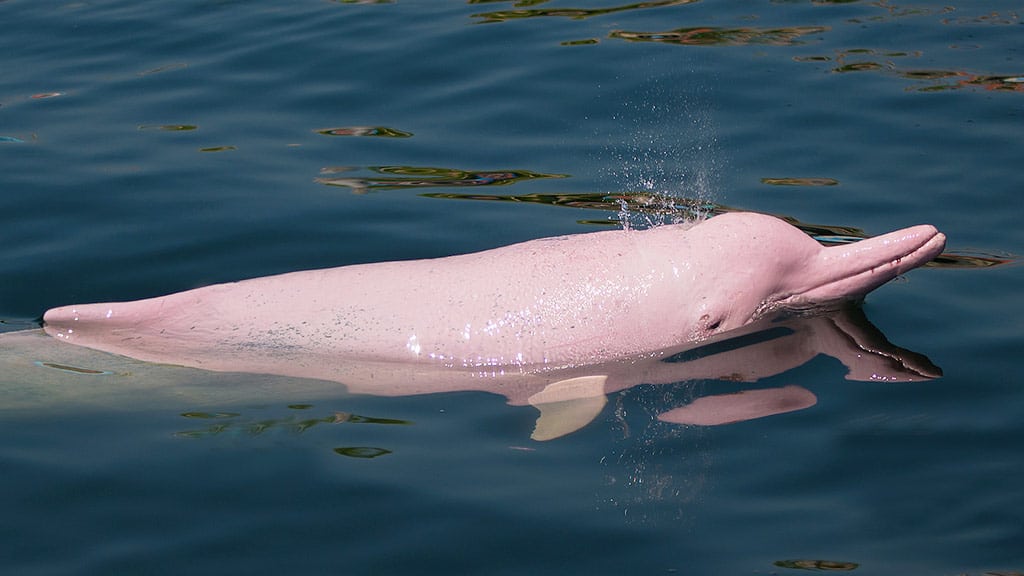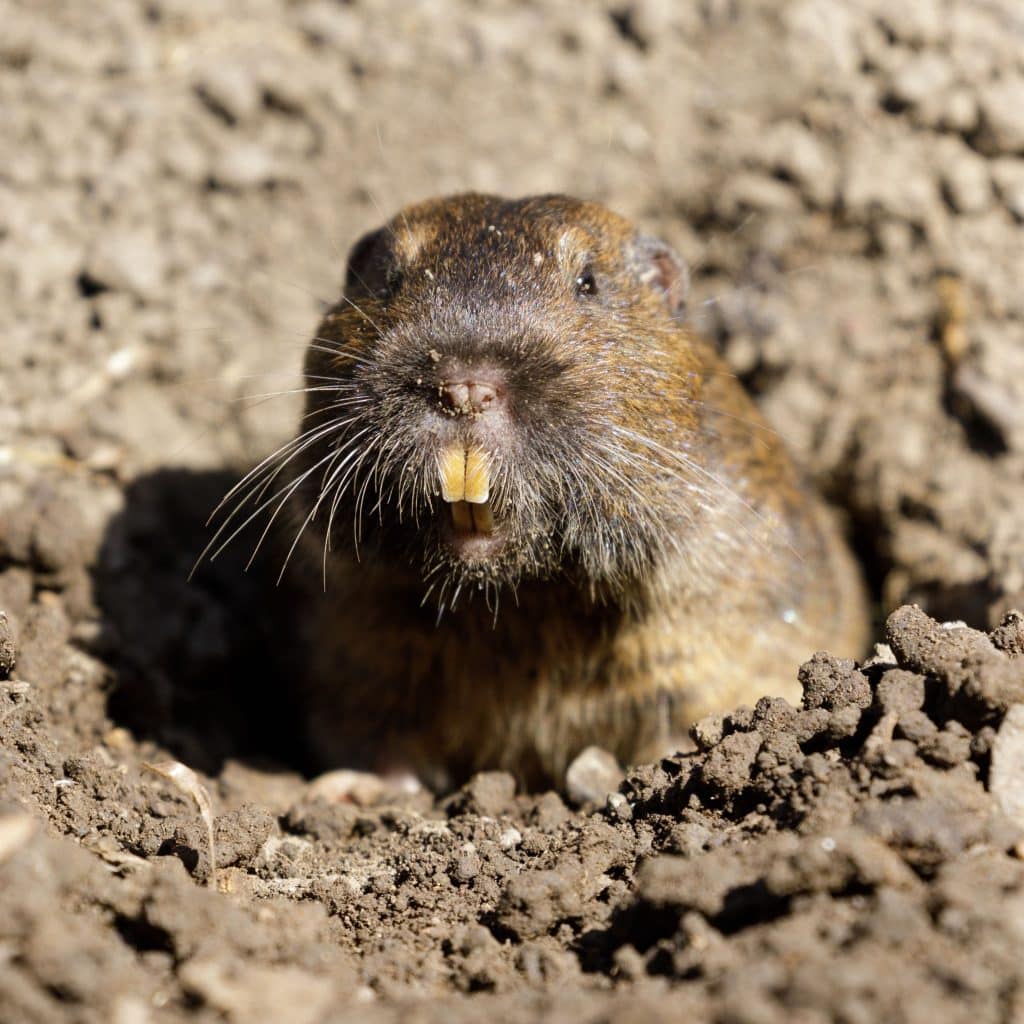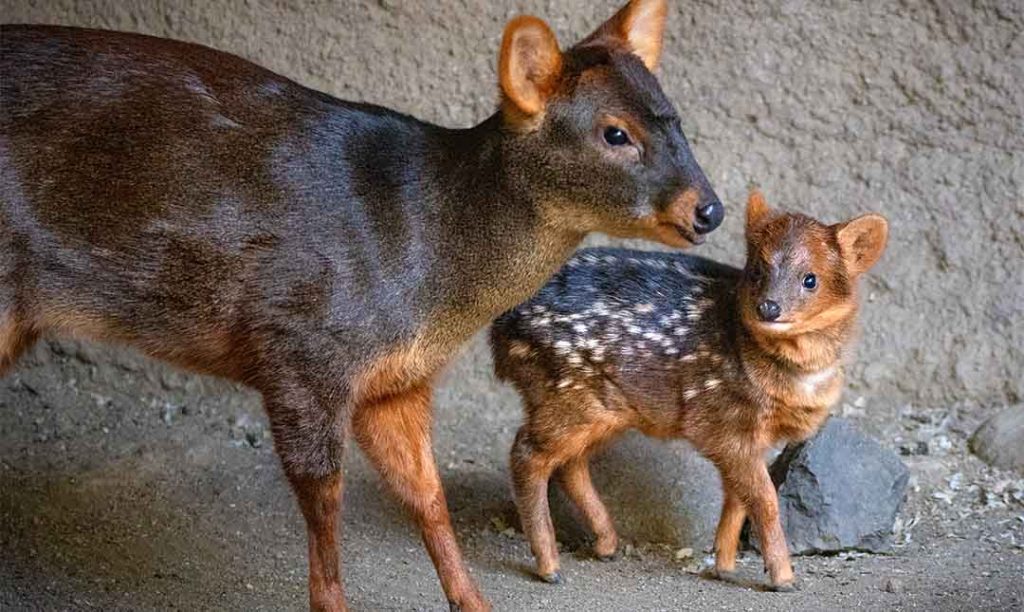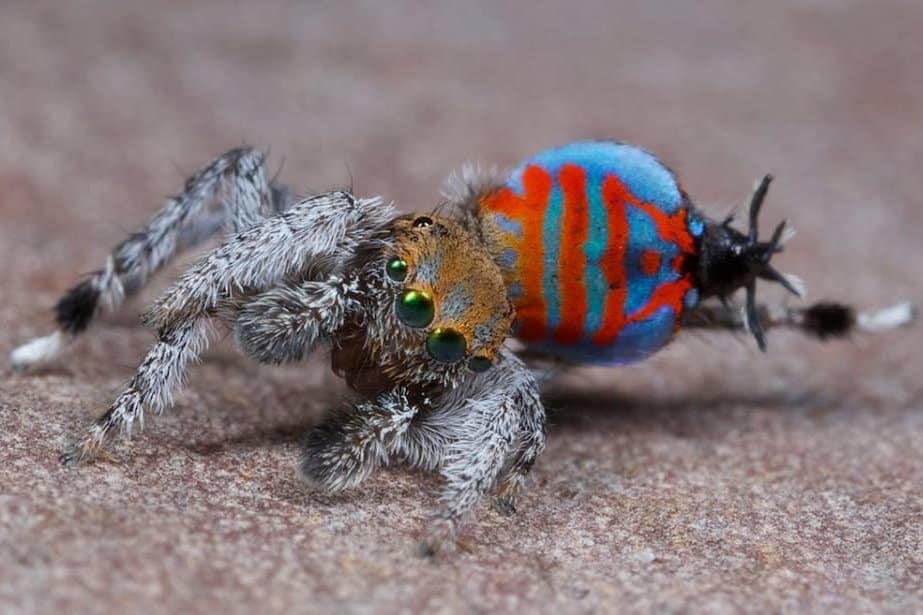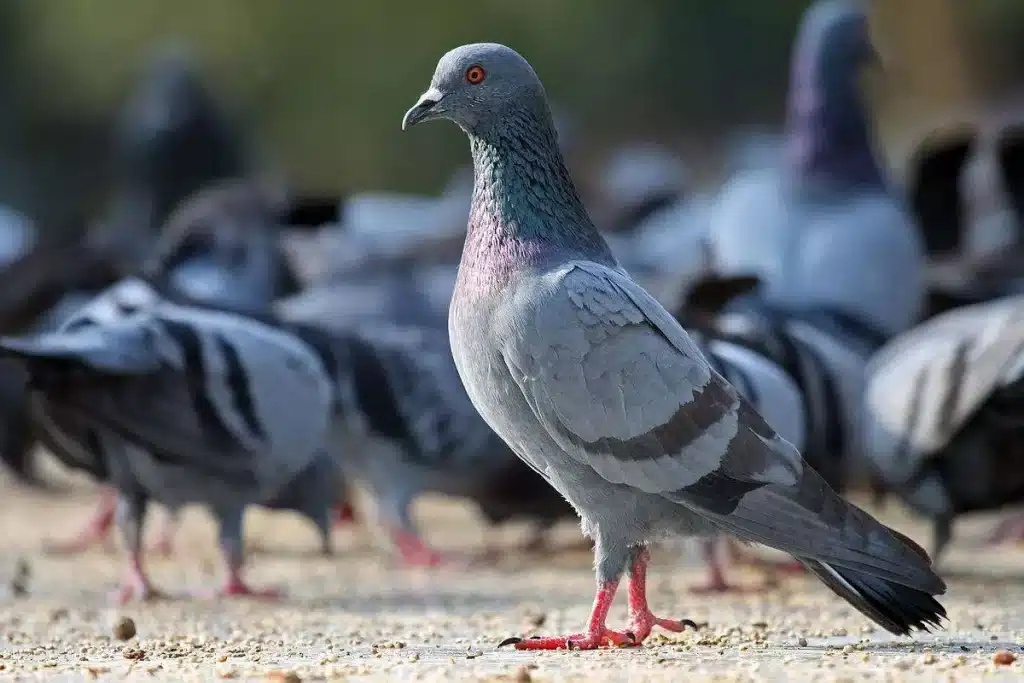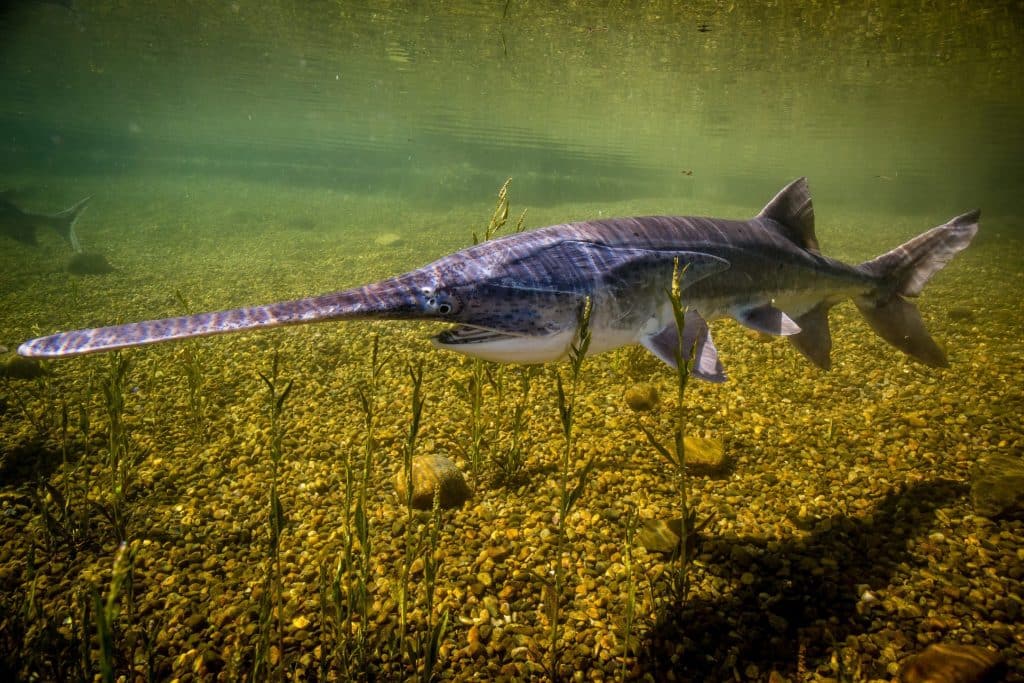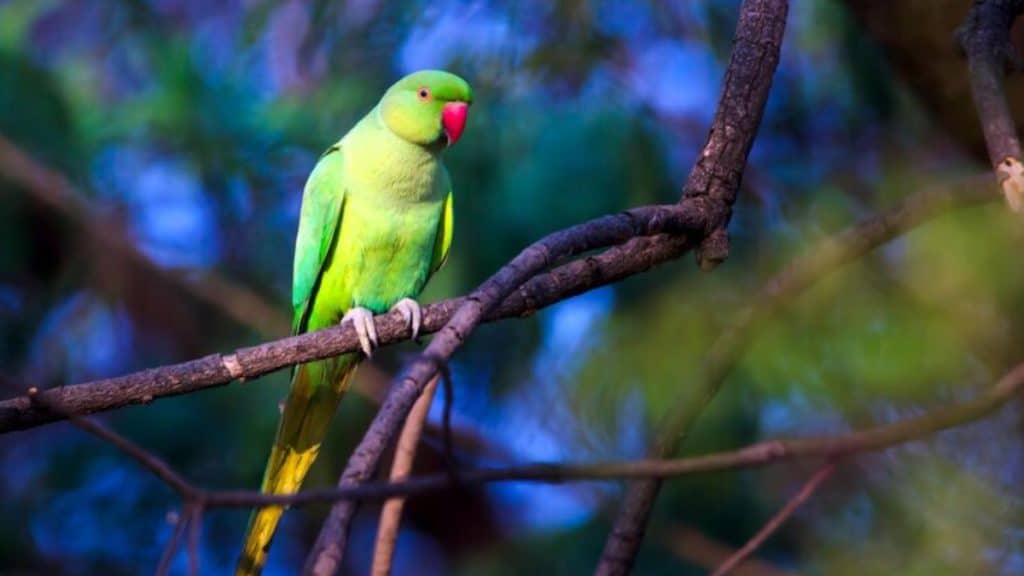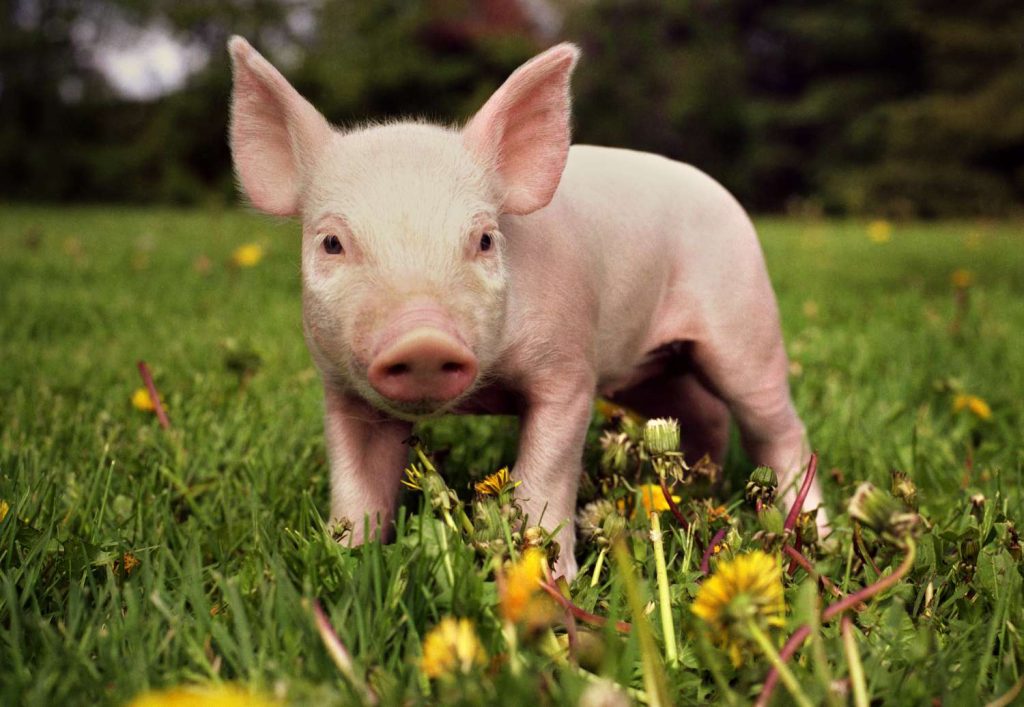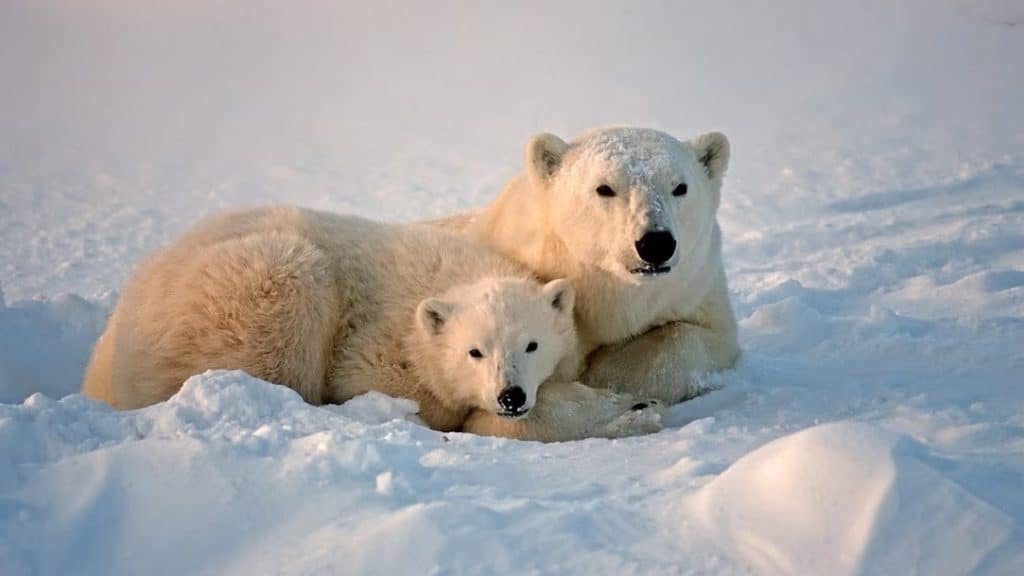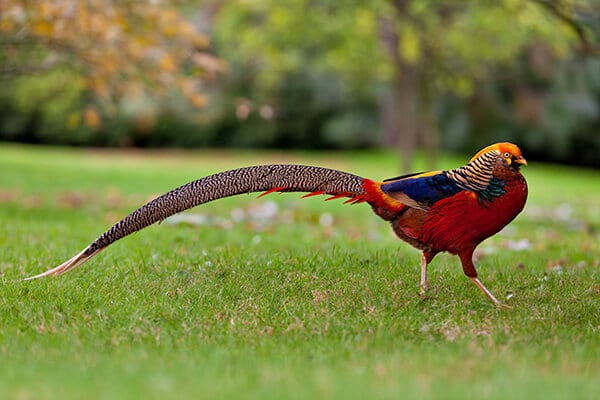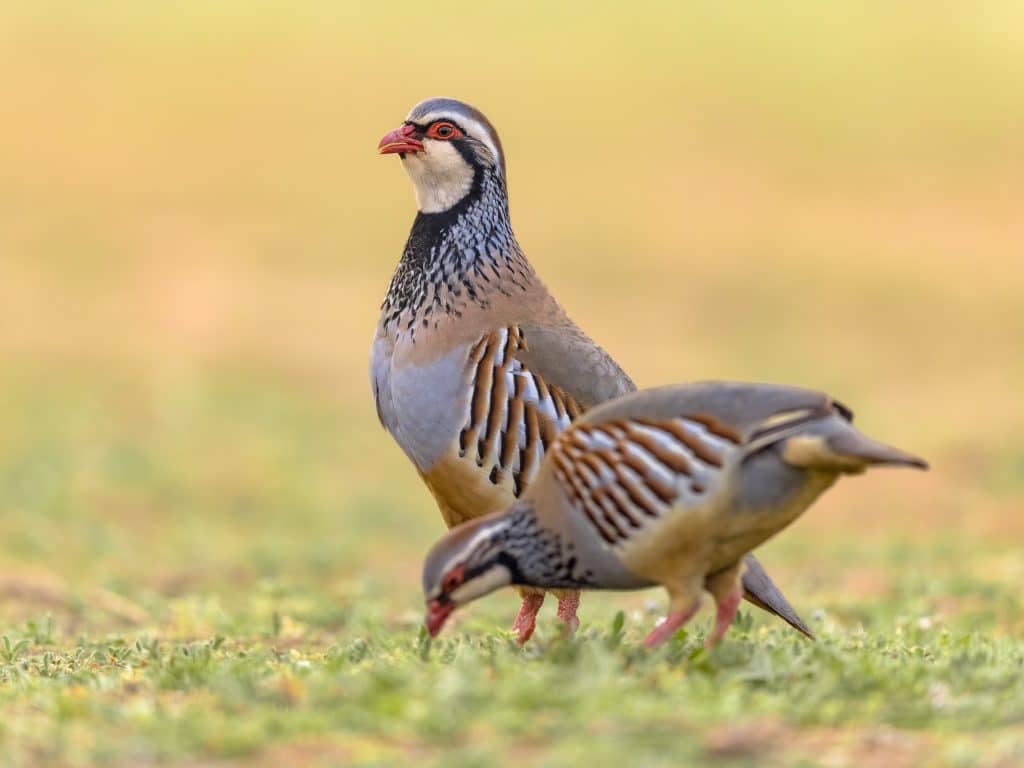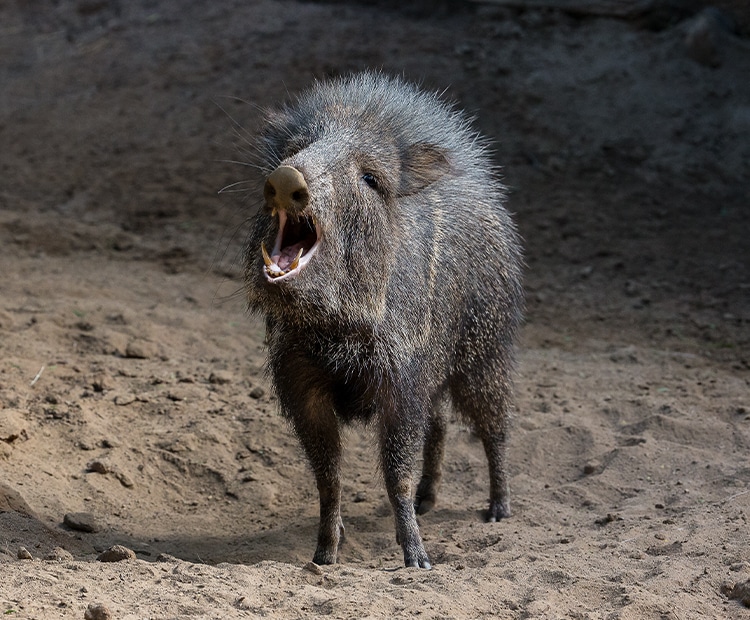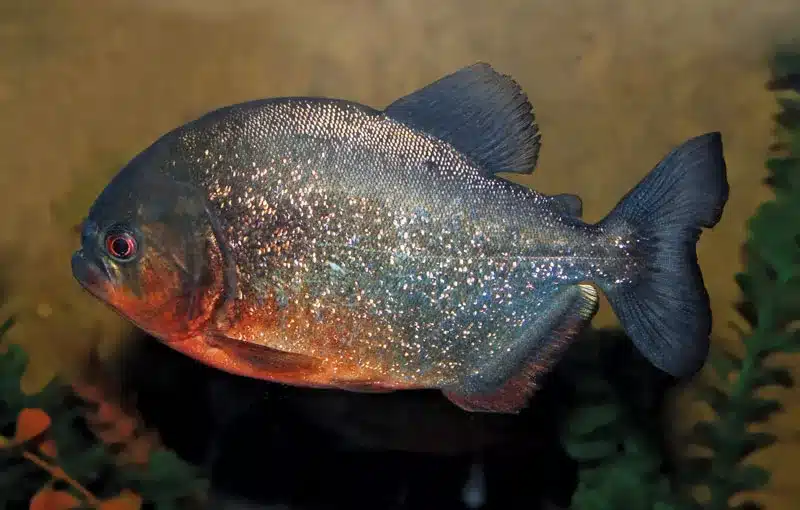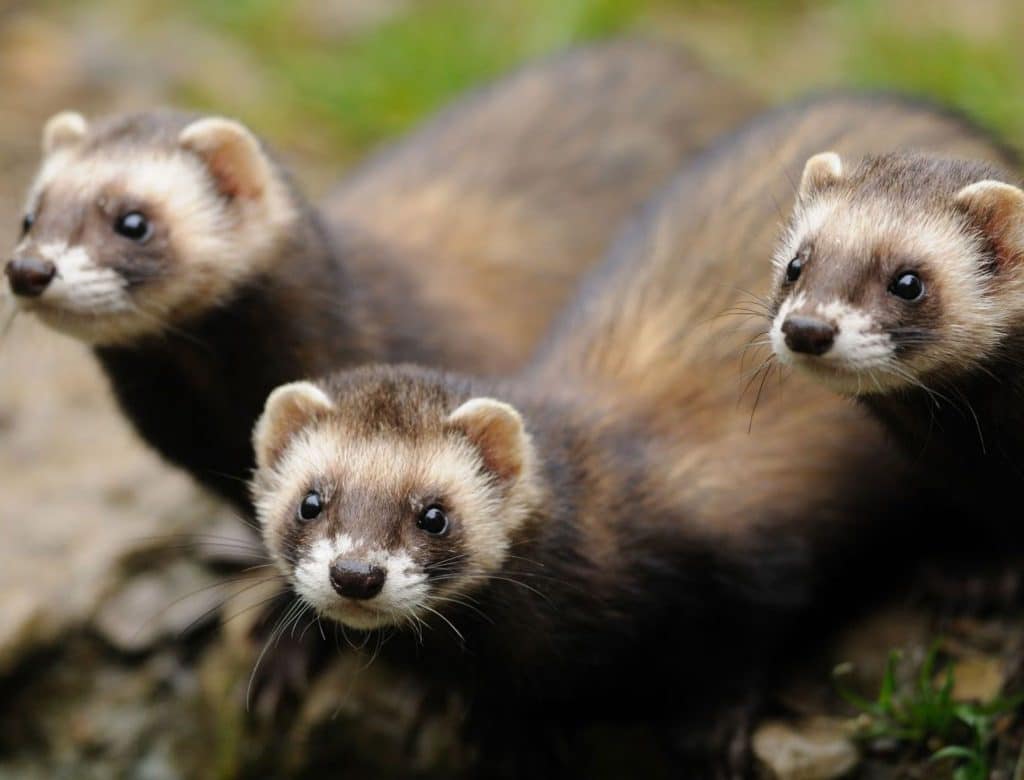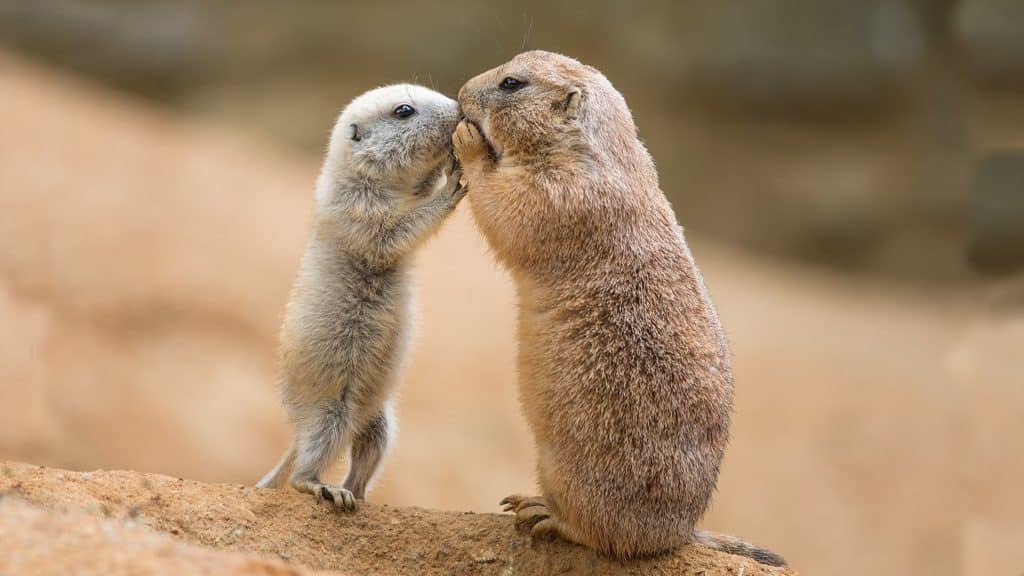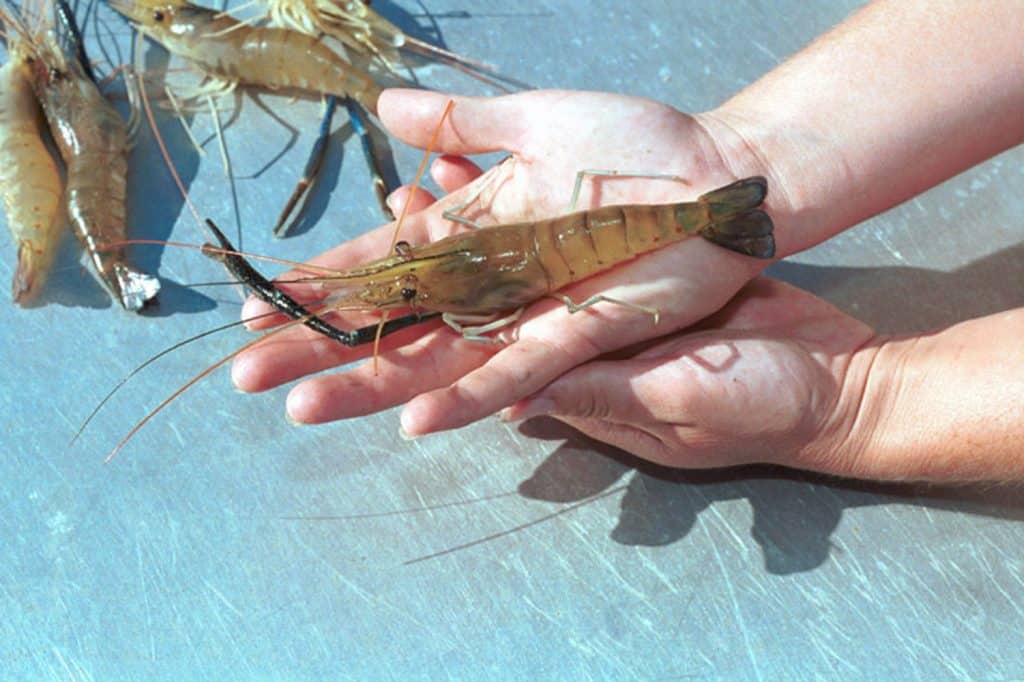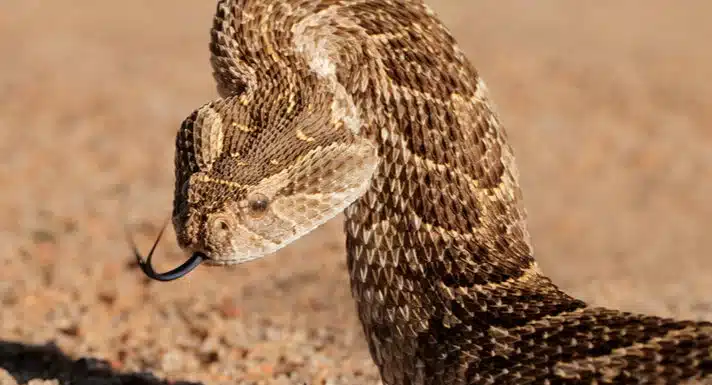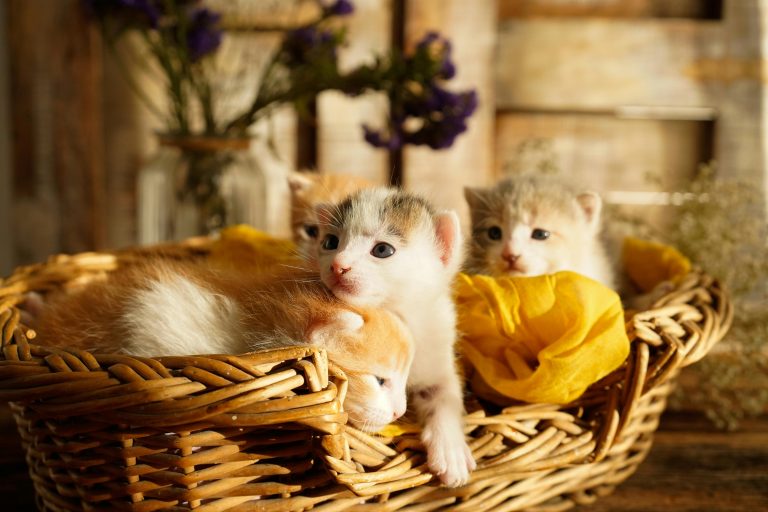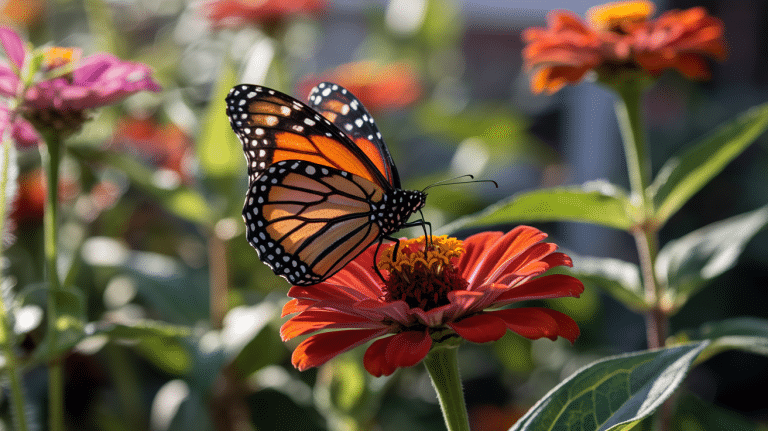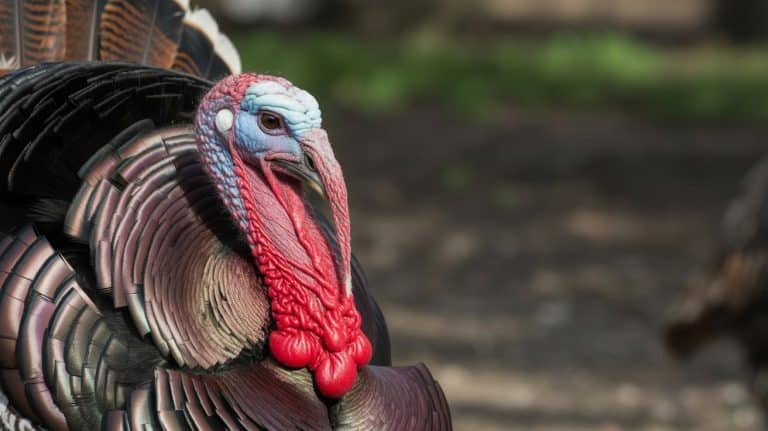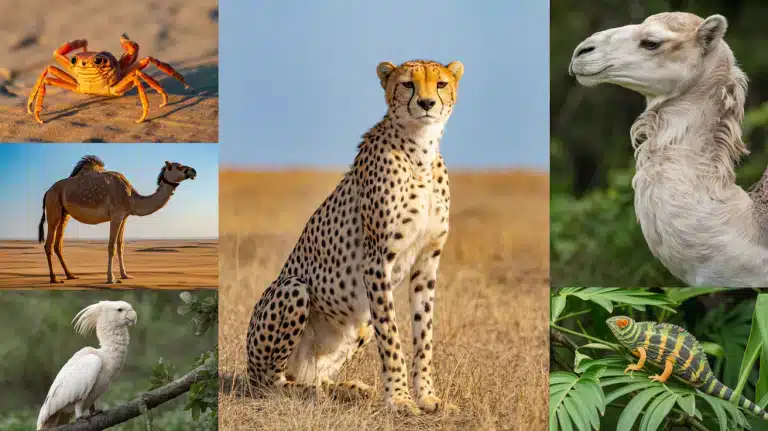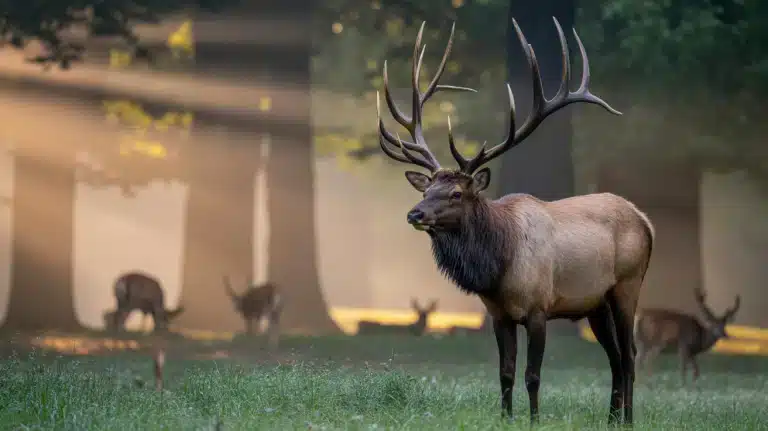If you are curious about the kind of animals that start with P, you have come to the right place. There is enormous biodiversity around us.
The diversity of living beings we witness results from the forces of nature and the process of natural selection. Each organism has evolved in response to their surroundings.
The same diversity exists when we look at animals whose names begin with P. From aquatic creatures to those living on land, you will find everything.
You will be amazed how many animals are there whose names begin with the same alphabet, i.e., P! Let’s get started.
List of Animals that Start with P
1. Panda

Origin: China
Habitat: Bamboo forests in mountainous regions
Scientific Name: Ailuropoda melanoleuca
Brief Description: Pandas are renowned for their distinctive black and white fur pattern. They have a pseudo-thumb, an extension of the wrist bone, which aids in gripping bamboo.
Interesting Facts
- Despite their classification as carnivores, pandas have evolved to have a diet almost entirely bamboo.
- Female pandas are only fertile for 2 to 3 days per year, making successful mating and reproduction challenging.
2. Penguin
Origin: Antarctica, though various species are found in different regions
Habitat: Southern Hemisphere, including Antarctica, South America, Africa, Australia, and New Zealand
Scientific Name: Various species, e.g., Aptenodytes forsteri (Emperor Penguin)
Brief Description: Penguins are flightless birds with streamlined bodies adapted for life in the water. They have flipper-like wings and are known for their distinct black-and-white coloration.
Interesting Facts
- Penguins are skilled swimmers who can reach up to 15 miles per hour in the water.
- Emperor Penguins are known for their remarkable journey, walking up to 60 miles inland to their breeding colonies.
3. Panther
Origin: Found in various regions, including Africa, Asia, and the Americas
Habitat: Diverse habitats, including forests, grasslands, and swamps
Scientific Name: Panthera pardus (Leopard), Panthera onca (Jaguar)
Brief Description: Panthers, including leopards and jaguars, are large cats known for their strength and agility. Black Panthers are melanistic variants with a dark coat.
Interesting Facts
- Panthers are excellent climbers and often carry their prey into trees to protect it from scavengers.
- The term “Black Panther” can refer to melanistic leopards or jaguars; their dark coloration is due to an excess of melanin.
4. Pelican
Origin: Global distribution, found on every continent except Antarctica
Habitat: Coastal and inland waters, including lakes, rivers, and estuaries
Scientific Name: Pelecanus (various species)
Brief Description: Pelicans are large water birds with a distinctive long bill and a large throat pouch. They are known for their impressive soaring and gliding flight.
Interesting Facts
- Pelicans are known for their unique feeding behavior, using their large bills and expandable throat pouches to scoop up fish from the water.
- The brown pelican is the smallest among pelican species and is the only one that plunges from the air into the water to catch its prey.
5. Platypus
Origin: Eastern Australia, including Tasmania
Habitat: Freshwater environments, such as rivers and streams
Scientific Name: Ornithorhynchus anatinus
Brief Description: The platypus is a unique and iconic Australian mammal known for its duckbill, webbed feet, and the ability to lay eggs.
Interesting Facts
- Platypuses are among the few mammals that lay eggs instead of giving birth to live young.
- Male platypuses have venomous spurs on their hind legs, which they use for self-defense.
6. Praying Mantis
Origin: Found worldwide, with a diverse range of species
Habitat: Various ecosystems, including gardens, forests, and grasslands
Scientific Name: Various species within the order Mantodea
Brief Description: Praying mantises are predatory insects known for their distinctive elongated bodies and specialized forelimbs for grasping prey.
Interesting Facts
- The name “praying mantis” comes from their folded, prayer-like stance.
- Female mantises are known for cannibalizing males during or after mating.
7. Porcupine
Origin: Found in various regions, including Africa, Asia, Europe, and the Americas
Habitat: Diverse habitats, including forests, deserts, and grasslands
Scientific Name: Erethizon dorsatum (North American Porcupine), Hystrix (Old World Porcupines)
Brief Description: Porcupines are rodents with a coat of sharp quills, which they use for defense. Old World and New World porcupines belong to different taxonomic families.
Interesting Facts
- Porcupines are excellent climbers and spend a significant amount of time in trees.
- The quills of a porcupine are modified hairs and have barbs that make them difficult to remove once embedded in a predator’s skin.
8. Puffin
Origin: Northern Hemisphere, including the Arctic and North Atlantic regions
Habitat: Coastal cliffs and islands where they nest in burrows
Scientific Name: Fratercula (Various species)
Brief Description: Puffins are seabirds with distinctive colorful bills, and during the breeding season, they develop bright facial markings.
Interesting Facts
- Puffins are known for their excellent diving abilities, reaching depths of up to 60 meters to catch fish.
- They have a distinctive way of holding several fish in their bills, allowing them to catch more prey during a single dive.
9. Peacock
Origin: South Asia, including India and Sri Lanka
Habitat: Forested areas, but domesticated peafowl can be found worldwide
Scientific Name: Pavo (Various species)
Brief Description: Peafowls are known for the striking plumage of the males, which includes an iridescent tail or train.
Interesting Facts
- The elaborate display of a peacock’s tail is used during courtship to attract females.
- Peafowls are members of the pheasant family and are one of the largest flying birds.
10. Pangolin
Origin: Found in Africa and Asia
Habitat: Forests, grasslands, and savannas
Scientific Name: Various species within the family Manidae
Brief Description: Pangolins are distinctive mammals covered in tough, overlapping scales. They are known for their unique defense mechanism of rolling into a ball when threatened.
Interesting Facts
- Pangolins are the only mammals with scales made of keratin, the same protein found in human hair and nails.
- Despite their protective scales, pangolins are heavily trafficked for their meat and scales, making them one of the most trafficked animals in the world.
11. Potoo
Origin: Found in Central and South America
Habitat: Tropical forests and wooded areas
Scientific Name: Various species within the Nyctibiidae family
Brief Description: Potoos are nocturnal birds known for their cryptic plumage, resembling tree bark. They have large eyes and a wide mouth.
Interesting Facts
- Potoos have a distinctive, haunting vocalization that aids in their communication during the night.
- Their large eyes provide excellent night vision, helping them spot prey in low-light conditions.
12. Proboscis Monkey
Origin: Borneo and Sumatra in Southeast Asia
Habitat: Coastal mangroves, riverine and swamp forests
Scientific Name: Nasalis larvatus
Brief Description: Proboscis monkeys are known for their distinctive long noses and pot-bellied appearance. Males have larger noses than females.
Interesting Facts
- The large, bulbous nose of male proboscis monkeys is thought to attract females and serves as a resonating chamber for vocalizations.
- Proboscis monkeys are excellent swimmers who leap from trees into rivers to escape predators.
13. Pika
Origin: Found in rocky mountainous regions of Asia, North America, and parts of Eastern Europe
Habitat: Alpine and subalpine meadows, talus slopes
Scientific Name: Ochotona (Various species)
Brief Description: Pikas are small, mountain-dwelling mammals closely related to rabbits and hares. They have round bodies, short limbs, and rounded ears.
Interesting Facts
- Pikas are adapted to cold climates and do not hibernate, relying on hay piles of dried vegetation to survive the winter.
- They use a distinctive, high-pitched vocalization to communicate with each other.
14. Parrotfish
Origin: Found in tropical and subtropical oceans around the world
Habitat: Coral reefs and rocky coastlines
Scientific Name: Various species within the family Scaridae
Brief Description: Parrotfish are colorful marine fish with distinctive beak-like mouths, which they use to scrape algae off coral reefs.
Interesting Facts
- Parrotfish play a crucial role in maintaining the health of coral reefs by controlling algae growth.
- They produce a mucous cocoon around themselves at night, which may help mask their scent from nocturnal predators.
15. Poison Dart Frog
Origin: Central and South America, particularly in tropical rainforests
Habitat: Forest floors, leaf litter, and vegetation in humid environments
Scientific Name: Dendrobatidae (family)
Brief Description: Poison dart frogs are small, brightly colored frogs known for their toxic skin secretions. Different species exhibit a range of vibrant colors.
Interesting Facts
- The vibrant colors of poison dart frogs serve as a warning to potential predators about their toxicity.
- Indigenous people have used the toxic secretions of these frogs to poison the tips of blowdarts for hunting.
16. Painted Turtle
Origin: North America
Habitat: Lakes, ponds, rivers, and marshes with slow-moving or still water
Scientific Name: Chrysemys picta
Brief Description: Painted turtles are freshwater turtles with colorful markings on their shells and skin. They are known for their basking behavior, often sunning themselves on logs.
Interesting Facts
- Painted turtles are one of the most widespread turtle species in North America.
- They are cold-blooded, relying on external heat sources, such as the sun, to regulate their body temperature.
17. Peregrine Falcon
Origin: Worldwide, found on every continent except Antarctica
Habitat: Diverse habitats, including cliffs, urban areas, and open landscapes
Scientific Name: Falco peregrinus
Brief Description: Peregrine falcons are renowned for their high-speed dives, making them one of the fastest animals in the world. They have distinctive black markings on their heads.
Interesting Facts
- Peregrine falcons can reach over 240 mph (386 km/h) during their hunting stoops.
- They were endangered due to the pesticide DDT, but conservation efforts have helped them recover in many regions.
18. Pink Dolphin (Amazon River Dolphin)
Origin: South America, particularly in the Amazon River basin
Habitat: Freshwater rivers, including the Amazon and Orinoco rivers
Scientific Name: Inia geoffrensis
Brief Description: Amazon river dolphins, also known as pink dolphins, are known for their distinctive pink coloration and long, slender bodies.
Interesting Facts
- Pink dolphins are one of the few dolphin species that inhabit freshwater environments.
- Their pink color is more prominent during the mating season and is thought to result from increased blood flow.
19. Pocket Gopher
Origin: North and Central America
Habitat: Grasslands, prairies, and agricultural fields
Scientific Name: Thomomys (Various species)
Brief Description: Pocket gophers are burrowing rodents known for their cheek pouches, which they use to transport food to their underground burrows.
Interesting Facts
- Pocket gophers are expert tunnelers, creating an extensive network of burrows several meters long.
- They are considered ecosystem engineers, influencing soil structure and vegetation composition.
20. Pudu
Origin: South America, particularly in Chile and Argentina
Habitat: Temperate rainforests and dense vegetation
Scientific Name: Pudu (Two species: Pudu Mephistopheles and Pudu pudu)
Brief Description: Pudu are small, shy deer known for their adorable appearance, short legs, and large eyes.
Interesting Facts
- Pudu are excellent jumpers and climbers, using their agility to navigate dense vegetation.
- Despite their small size, pudu is skilled at hiding from predators, relying on their cryptic coloration.
21. Peacock Spider
Origin: Australia
Habitat: Varied, including grasslands and forests
Scientific Name: Maratus (Various species)
Brief Description: Peacock spiders are known for the vibrant and intricate displays performed by males during courtship, resembling miniature peacocks.
Interesting Facts
- Male peacock spiders have colorful abdominal flaps that they use in elaborate courtship dances to attract females.
- These spiders are not dangerous to humans and are primarily known for their striking appearance and behaviors.
22. Pigeon
Origin: Worldwide, with numerous species in urban and rural environments
Habitat: Varied, including cities, towns, and agricultural areas
Scientific Name: Columba (Various species)
Brief Description: Pigeons, or rock doves, are stout-bodied birds with a characteristic cooing call. They are highly adaptable and commonly found in urban environments.
Interesting Facts
- Pigeons have been domesticated for thousands of years and have played various roles, including messenger birds and pets.
- They are excellent navigators and can find their way home over long distances.
23. Paddlefish
Origin: North America and Asia
Habitat: Rivers and lakes with slow-moving or stagnant water
Scientific Name: Polyodontidae (family)
Brief Description: Paddlefish are distinctive fish with a long, paddle-shaped snout called a rostrum. They are known for their unique filter-feeding method.
Interesting Facts
- Paddlefish are often called “living fossils” due to their ancient lineage, dating back over 300 million years.
- The rostrum of the paddlefish is covered in electroreceptors, allowing them to detect the presence of prey.
24. Python
Origin: Found in Africa, Asia, Australia, and some islands in the Pacific
Habitat: Diverse habitats, including forests, grasslands, and deserts
Scientific Name: Pythonidae (family)
Brief Description: Pythons are large, non-venomous snakes known for their powerful constricting abilities and distinctive patterned markings.
Interesting Facts
- Pythons are ambush predators, waiting for prey to pass by before striking and constricting them.
- Some species, like the reticulated python, are among the longest snakes in the world.
25. Parrot
Origin: Found in tropical and subtropical regions worldwide, with the greatest diversity in South America, Africa, Asia, and Australasia
Habitat: Varied habitats, including rainforests, savannas, and deserts, with some species adapting to urban environments
Scientific Name: Psittaciformes (order), with numerous species belonging to various genera such as Ara (Macaws) and Melopsittacus (Budgerigars)
Brief Description: Parrots are highly intelligent and colorful birds with strong, curved beaks, zygodactyl feet (two toes facing forward and two backward), and the ability to mimic sounds.
Interesting Facts
- Parrots are known for their exceptional vocal mimicry, capable of imitating human speech, other birds, and various sounds in their environment.
- Many parrot species form strong bonds with their human caregivers, displaying social behaviors and forming relationships.
26. Pig
Origin: Domesticated pigs (Sus scrofa domesticus) originated from wild boars in multiple regions, with a long history of domestication dating back thousands of years.
Habitat: Originally found in forests and grasslands, domestic pigs are now globally distributed and raised on farms.
Scientific Name: Sus scrofa domesticus
Brief Description: Pigs are domesticated mammals known for their stout bodies, short legs, and distinctive snout. They have a well-developed sense of smell.
Interesting Facts
- Pigs are highly intelligent animals, often compared to dogs, regarding problem-solving abilities.
- Wild boars, the ancestors of domestic pigs, are native to Europe, Asia, and North Africa.
27. Polar Bear
Origin: Primarily found within the Arctic Circle, including the Arctic Ocean, sea ice, and surrounding land masses.
Habitat: Sea ice, coastal areas, and nearby islands. They are highly adapted to a marine environment.
Scientific Name: Ursus maritimus
Brief Description: Polar bears are large, white-furred bears with powerful limbs and paws. They have a distinctive long neck and head, well-suited for swimming.
Interesting Facts
- Polar bears are superb swimmers, capable of covering long distances for food. They use their front paws for paddling and their hind legs for propulsion.
- Their white fur provides excellent camouflage on the sea ice, helping them sneak up on seals.
28. Pheasant
Origin: Native to Asia, but introduced and widely distributed in many parts of the world, including Europe, North America, and New Zealand.
Habitat: Varied, including grasslands, woodlands, and farmlands. Pheasants are often found in areas with a mix of open spaces and cover.
Scientific Name: Phasianus (Common Pheasant) and other genera and species.
Brief Description: Pheasants are colorful birds with long tails and distinctive plumage, particularly the males. They belong to the family Phasianidae.
Interesting Facts
- Male pheasants, called roosters, are known for their vibrant and iridescent plumage, often featuring striking colors and long tail feathers.
- Pheasants are ground-dwelling birds but are capable of short, powerful flights. They often use their wings to escape from predators.
29. Partridge
Origin: Partridges are found across Europe, Asia, Africa, and the Middle East, with various species adapted to different regions.
Habitat: Varied, including grasslands, farmlands, and open woodlands. They are ground-dwelling birds, often seeking cover in shrubs and tall grasses.
Scientific Name: Various species within the family Phasianidae, including Perdix (gray partridges) and Alectoris (red-legged partridges).
Brief Description: Partridges are medium-sized game birds with a compact build. They have short legs and strong wings adapted for short bursts of flight.
Interesting Facts
- Partridges are known for their distinctive cackling or drumming calls used for communication and during courtship displays.
- They prefer to run rather than fly and are well-adapted to life on the ground, using their wings to escape predators when necessary.
30. Peccary
Origin: Native to the Americas, ranging from the southwestern United States through Central America to South America.
Habitat: Varied, including deserts, grasslands, and tropical rainforests. Peccaries are adaptable to different environments.
Scientific Name: The Tayassuidae family includes several species like the Collared Peccary (Pecari tajacu) and the White-lipped Peccary (Tayassu pecari).
Brief Description: Peccaries are medium-sized ungulates with a pig-like appearance. They have a compact, stocky build and distinctive downward-curving tusks.
Interesting Facts
- Unlike pigs, peccaries have scent glands on their backs, near the base of the tail, which they use to mark territory and communicate with each other.
- Peccaries are social animals, often forming groups called “sounders.” They engage in cooperative behaviors for activities like foraging and defending against predators.
31. Piranha
Origin: Native to South America, inhabiting rivers and lakes in the Amazon Basin and surrounding areas.
Habitat: Freshwater environments, including rivers, lakes, and flooded forests. Piranhas are well-adapted to various aquatic habitats.
Scientific Name: Various species within the Serrasalmidae family, including Serrasalmus and Pygocentrus genera.
Brief Description: Piranhas are freshwater fish known for their sharp teeth, powerful jaws, and schooling behavior. A robust and compressed body often characterizes them.
Interesting Facts
- Contrary to their reputation as relentless predators, piranhas are primarily scavengers and opportunistic feeders, often consuming injured or weakened prey.
- Piranha species can exhibit different behaviors and diets. Some are more herbivorous, while others are primarily carnivorous.
32. Polecat
Origin: Native to Europe and parts of Asia. Various polecat species are found in different regions, including the European polecat (Mustela putorius).
Habitat: Varied, including woodlands, grasslands, and agricultural areas. Polecats are adaptable and can be found in different environments.
Scientific Name: Various species within the Mustelidae family, including Mustela putorius (European polecat).
Brief Description: Polecats are medium-sized carnivores with slender bodies, short legs, and a bushy tail. They belong to the weasel family (Mustelidae).
Interesting Facts
- Polecats have a distinctive fur pattern, characterized by a dark brown coat with a white underbelly and facial markings.
- They are known for their musky scent, which they use for communication and defense. This scent is emitted from their anal glands.
33. Prairie Dog
Origin: Native to North America, primarily inhabiting grasslands and prairies. Several species exist, including the black-tailed prairie dog (Cynomys ludovicianus).
Habitat: Grasslands, prairies, and open meadows. Prairie dogs are social rodents that live in burrow systems.
Scientific Name: Various species within the genus Cynomys, including Cynomys ludovicianus (black-tailed prairie dog).
Brief Description: Prairie dogs are small to medium-sized rodents with stout bodies, short legs, and short tails. They are known for their distinctive barking calls.
Interesting Facts
- Prairie dogs are highly social animals that live in large colonies called “towns.” These towns can cover extensive areas and consist of interconnected burrow systems.
- They are known for their complex communication system, which includes different types of calls to warn the colony of predators or communicate about food sources.
34. Prawn
Origin: Found in various marine and freshwater environments worldwide. Prawns are often associated with coastal regions and estuaries.
Habitat: Varied, including saltwater habitats such as coastal waters, coral reefs, and estuaries, as well as freshwater environments like rivers and lakes.
Scientific Name: Various species within the suborder Dendrobranchiata and Pleocyemata. Common edible prawns include Penaeus and Macrobrachium species.
Brief Description: Prawns are crustaceans similar to shrimp, with a slender body, a long abdomen, and branching gills. A curved body shape and large, well-developed claws characterize them.
Interesting Facts
- Prawns, including humans, are an important food source for marine and freshwater species. They are a popular seafood item in many cuisines.
- Some prawn species, like the pistol shrimp, are known for their unique ability to rapidly produce a loud snapping sound by closing their enlarged claw. This sound is used for communication and hunting.
35. Puff Adder
Origin: Native to many African ecosystems, including savannas, grasslands, and forests. It is one of the continent’s most widespread and venomous snakes.
Habitat: Puff adders are highly adaptable and can be found in diverse environments, from dry, arid regions to more humid areas.
Scientific Name: Bitis arietans
Brief Description: Puff adders have robust, heavily built bodies with distinctive triangular heads. They are characterized by dark, chevron-shaped markings along their back.
Interesting Facts
- Puff adders are known for their potent cytotoxic venom, which can cause severe tissue damage and is potentially fatal to humans if not treated promptly.
- Despite their relatively short length, puff adders have a broad and thick body, giving them a formidable appearance.
Summing It Up
As we have come to the end of this list, you must have realized how unique each organism is!
Their unique adaptations, habitats, and origins contribute to the immense diversity. Each species, however big, small, or microscopic, plays an important role.
The above list is wholesome, summarising the origin, habitat, scientific name, brief description, and interesting facts about each organism.
However, this list is not the end, as it is impossible to mention all the animals that start with p.
Let us know your favorite animal in the comments section below.

